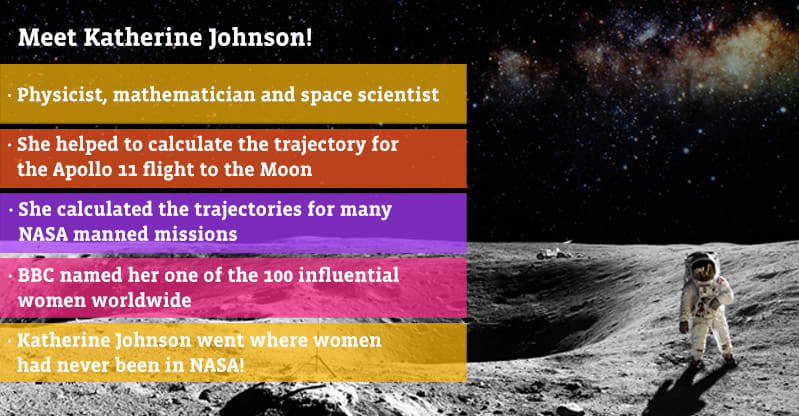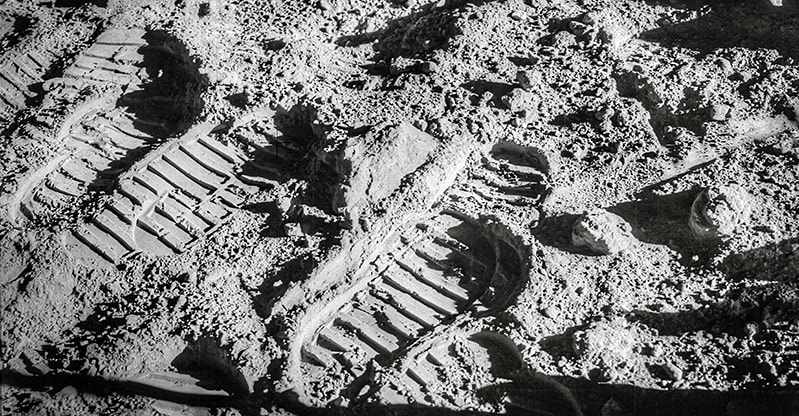Every time we write about another one of these phenomenal people, we feel proud. We are giving them the stage they deserve, and we feel we must be one of those who genuinely recognize these fundamental figures in history.
Before jumping to the amazing woman we are highlighting in this specific article, we want to remind you this is a series of blog posts in which we tell you a bit more about outstanding women in a world that, traditionally, was though as a “field for men” – and whoever used to think like this, is completely wrong!
A few weeks ago we spoke about Hedy Lamarr, and before that, we discussed the inspiring life of Maria Montessori. Remember? Well, on this occasion, the applause goes to another genius: Mrs. Katherine Johnson. She might sound familiar because of the new-ish film “Hidden Figures”, a film that by the way, we really recommend you watch!
Now, get ready to learn a bit more about Katherine Johnson, her work, and her magnificent legacy!

Who was Katherine Johnson?
Katherine Johnson was born in 1918, near West Virginia. Besides showing very strong mathematical skills from a very young age, she also graduated from high school at the age of 14. When she was only 18 years old, she graduated with degrees in both mathematics and French. Amazing, isn’t?
Although the first job she found was as a teacher, in 1953 she joined NASA and got where women had never been before. Johnson was a very talented mathematician whose calculations of orbital mechanics were a fundamental part of the undeniable success of the first and subsequent U.S. manned missions to outer space.

A bit more about Katherine Johnson’s career!
Before computers existed as we know them today, people used to work as “computers”, and that was the case of Katherine Johnson. During a large part of the 1950s, she worked analyzing topics such as gust alleviation for aircraft.
From the late ’50s till 1986, Johnson worked in a different, more influential field: she was an aerospace technologist. That meant to her that she had to move her career to the Spacecraft Controls Branch.
She was the one who calculated the trajectory for the space flight of the first American in space: Mr. Alan Shepard. But that is not all! In 1961 she also calculated the launch window for NASA’s Mercury mission (did you know there was a mission to Mercury?!).
According to Wikipedia: “(…) Johnson later worked directly with digital computers. Her ability and reputation for accuracy helped to establish confidence in the new technology. In 1961, her work helped to ensure that Alan Shepard’s Freedom 7 Mercury capsule would be quickly found after landing, using the accurate trajectory that had been established.”

Apollo 11 and 13: Johnson and the moon
Johnson’s work doesn’t end there!
Johnson was part of the team that calculated the trajectory for the Apollo 11 in 1969. While the moon landing was actually happening, Katherine was at a meeting in the Pocono Mountains.
Did you think it ends here? No sir! In 1970, Johnson worked on the Apollo 13 moon mission. When the mission was aborted, her work on backup procedures, her brilliant accuracy, and the charts she made helped set a safe path for the crew’s return to Earth.

A huge inspiration for both men and women!
What we did here was to show you only a tiny bit of Johnson’s life and career. This should inspire you to understand one simple thing: You can do it! There is no such thing as a field for men or a field for women. The impossible does not exist.
Thank God, today the number of tools we can give our kids to succeed in the near future is much more than in the past. By only receiving these tools and practicing how to use them, they could change the world, just like Katherine Johnson did.

Knowing how to code can give them the base to create something they imagine. But not only that, because programming goes beyond the simple line of code. It can give them 21st-century skills like creativity, problem-solving, critical thinking, analytical thinking, and the most important of all: teamwork. Because if we want to change the world, we must do it together!
Check out our live, online courses here. Let yourself be surprised by your kids’ fast results.




